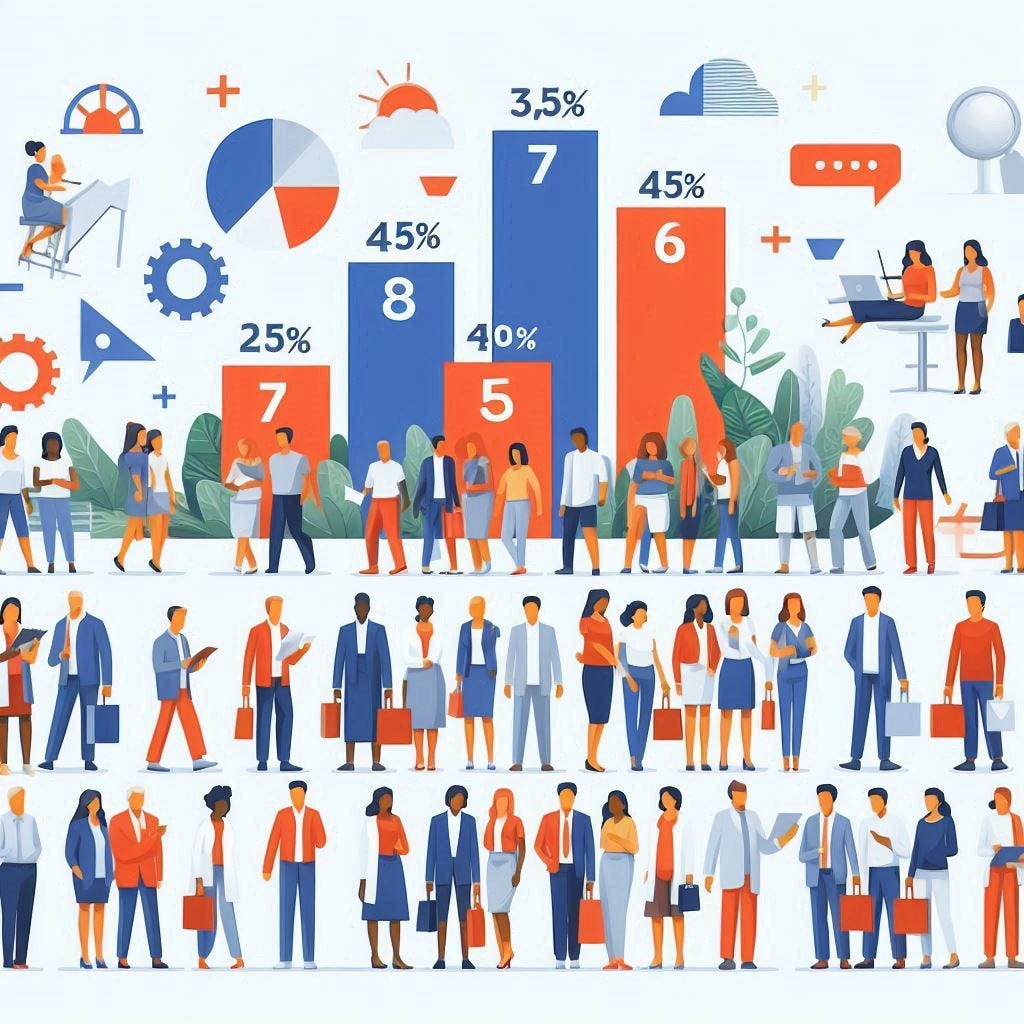A Simple Fix for All Those Stories About Polls
Horse race stories are inevitable, but could be done better.
Welcome to Second Rough Draft, a newsletter about journalism in our time, how it (often its business) is evolving, and the challenges it faces.
As we approach the final phases of this year’s campaign, one of the complaints you will surely hear is that there are too many stories about polls. I agree. As Jay Rosen of NYU has repeatedly argued, the focus of reporting should be on “not the odds, but the stakes.” And I think that argument has had notable impact on the coverage. But lots of poll stories remain, and that will only intensify as the voting draws nearer.
This week I want to offer a simple idea for how the poll stories that are going to be written should be crafted. I think it could make a big difference in offering readers a more insightful view of where politics in America stand today. Before turning to the idea itself, though, I just want to repeat something I’ve said before, and continue to feel strongly: news organizations should not themselves field political polls, leaving the space to the myriad of others who do so.
Here's my fix for the stories: Lead with independent voters.
Many poll stories these days are fairly formulaic. You start with the top line finding, whether it be how people feel about an issue or the candidates. Then, because the country is so polarized and almost everyone believes the presidential election is likely to be close, you note the large disparities between responses from Republicans and Democrats. Maybe you even contrast how united one group is compared to the other. You thus comfortably reinforce everyone’s prior conceptions, and move on.
There is a better formula though, and it’s rooted in a fundamental fact that political reporters know, but frequently just ignore in their coverage: Many people in this country, actually a plurality, are neither Republicans nor Democrats, and it is almost certainly their votes that will determine the election results, and thus the country’s future.
A governing plurality
In fact, as Gallup charts monthly, about 27-28% of voters currently identify with each of the two major parties, while 42-43% identify as independents. Independents have consistently outnumbered both Democrats and Republicans for almost 15 years, something that had never before been true in modern times.
Which brings me to my alternative formula. Start with the topline results if you must (political detox can only go so far), but then move immediately to report on the results among independents. Then note which of the two partisan positions the independent voters seem closer to, whether it’s on an issue or a horse race. The outlier views of the party faithful least closely aligned with independents would come last in such a story, if they made the cut at all. These are the views least likely to prevail when the dust settles, and while it’s helpful to understand everyone in the electorate, such fringe views (as in many cases they are), shouldn’t be our central focus, particularly in the home stretch.
How it doesn’t work now
Thus, to draw examples from some recent stories, while it may be interesting that 10% of Republicans told a pollster that Trump’s felony convictions made them less likely to vote for him, it’s almost certainly more significant that 25% of independents said as much, yet a recent Reuters story relegated the latter finding to the fourth paragraph, while placing the former in the headline.
Some otherwise very good news organizations ask independents to identify which of the two major parties they lean toward, and then report poll results as if almost everyone in the country is a partisan, which the party-ID data noted above makes clear just isn’t the case; here’s a recent AP story on immigration, for instance, making that mistake.
Some recent stories do better in my view, focusing on independents. Here’s one from Axios, for instance, with a promising headline, even though it puts so much of an emphasis on “brevity” as to negate Axios’s other brand promise of “smart.” And this from ABC News is on-target, although you have to read to the seventh paragraph to get to what ought to have been the lead.
Let me conclude where I began, just to make sure I have left you in no doubt. There are too many poll stories, and there will be too many more. But they are being published, in part, because people are reading them. All of that effort, by both writers and readers, could produce a bit more light, even at the cost of a bit less heat, if the frame of the stories was adjusted to focus more closely on the voters who will likely decide the fate of the nation. That shouldn’t be too much to ask.


This makes sense to me. Let's hear from the people who are still persuadable first, not from the two groups who have made up their minds. What news is affecting the persuadables?
I agree with Matthew.
Did not know there were so many independents.